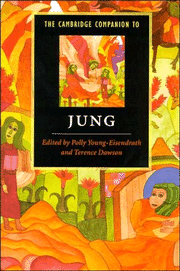Book contents
- Frontmatter
- Introduction
- Part 1 Jung's ideas and their context
- Part 2 Analytical psychology in practice
- 5 The classical Jungian school
- 6 The archetypal school
- 7 The developmental school
- 8 Transference and countertransference
- 9 Me and my anima
- 10 The case of Joan
- Part 3 Analytical psychology in society
- Glossary
- Index
- References
8 - Transference and countertransference
from Part 2 - Analytical psychology in practice
Published online by Cambridge University Press: 28 May 2006
- Frontmatter
- Introduction
- Part 1 Jung's ideas and their context
- Part 2 Analytical psychology in practice
- 5 The classical Jungian school
- 6 The archetypal school
- 7 The developmental school
- 8 Transference and countertransference
- 9 Me and my anima
- 10 The case of Joan
- Part 3 Analytical psychology in society
- Glossary
- Index
- References
Summary
Jung's writings are peppered by seemingly throwaway comments and assertions that have contributed to Jungian analysis earning the reputation of being a psychodynamic therapy that does not concern itself much with the transference. For example:
I personally am always glad when there is only a mild transference or when it is practically unnoticeable. (CW 16, pp. 172-173)
When taken out of context, such statements can easily undermine the strength of an arc of development in Jung's treatment of the transference which spans fifty years. Already in 1913, alluding to the transference, Jung wrote:
Thanks to his personal feeling, Freud was able to discover wherein lay the therapeutic effect of psychoanalysis. (CW 4, p. 190)
And towards the end of his life he is quite adamant when he states:
The main problem of medical psychotherapy is the transference. In this matter Freud and I were in complete agreement. (Jung 1963, p. 203)
Where Jung and Freud were very much in disagreement was in their views on countertransference, which Freud regarded as an unwelcome interference in the analyst's receptivity to communications from the patient. This interference occurred when the patient activated unconscious conflicts in the analyst which had the effect of making the analyst want to counter the patient, in the sense of warding the patient off. Freud's approach was to insist on the analyst recognizing and overcoming countertransference, a conviction which led him to apologize to his analysand, Ferenczi, for his failure to suppress countertransference intrusions (Freud, 1910).
- Type
- Chapter
- Information
- The Cambridge Companion to Jung , pp. 141 - 163Publisher: Cambridge University PressPrint publication year: 1997
References
- 1
- Cited by

